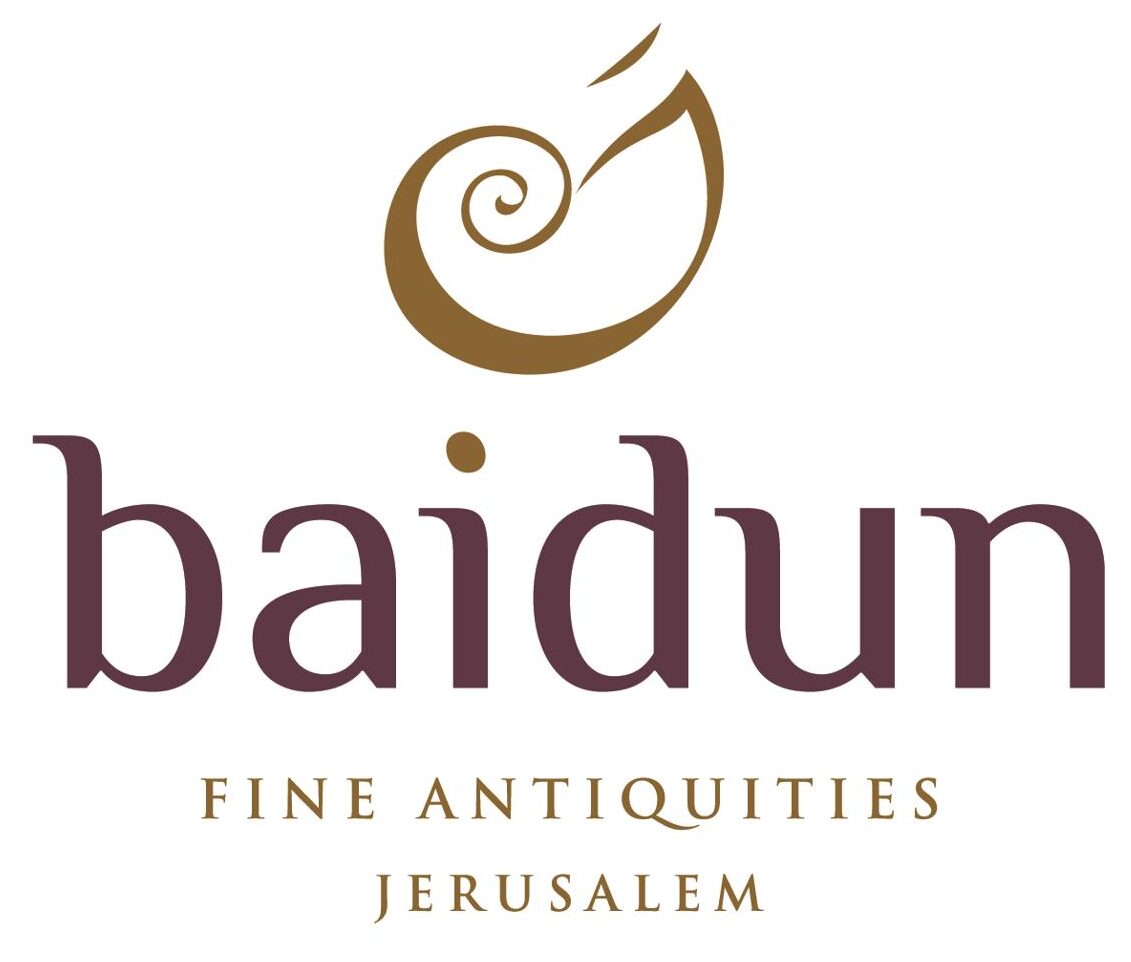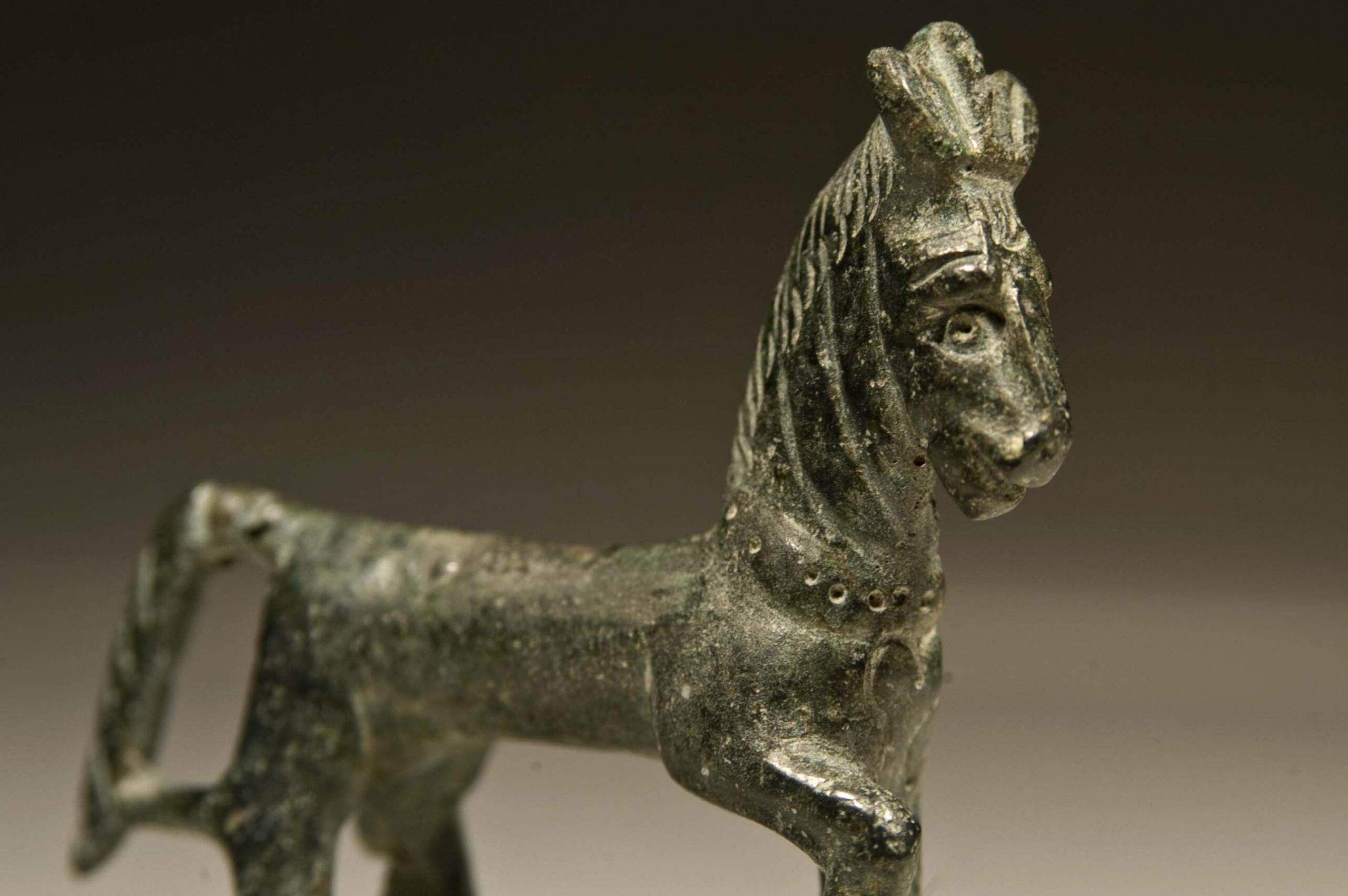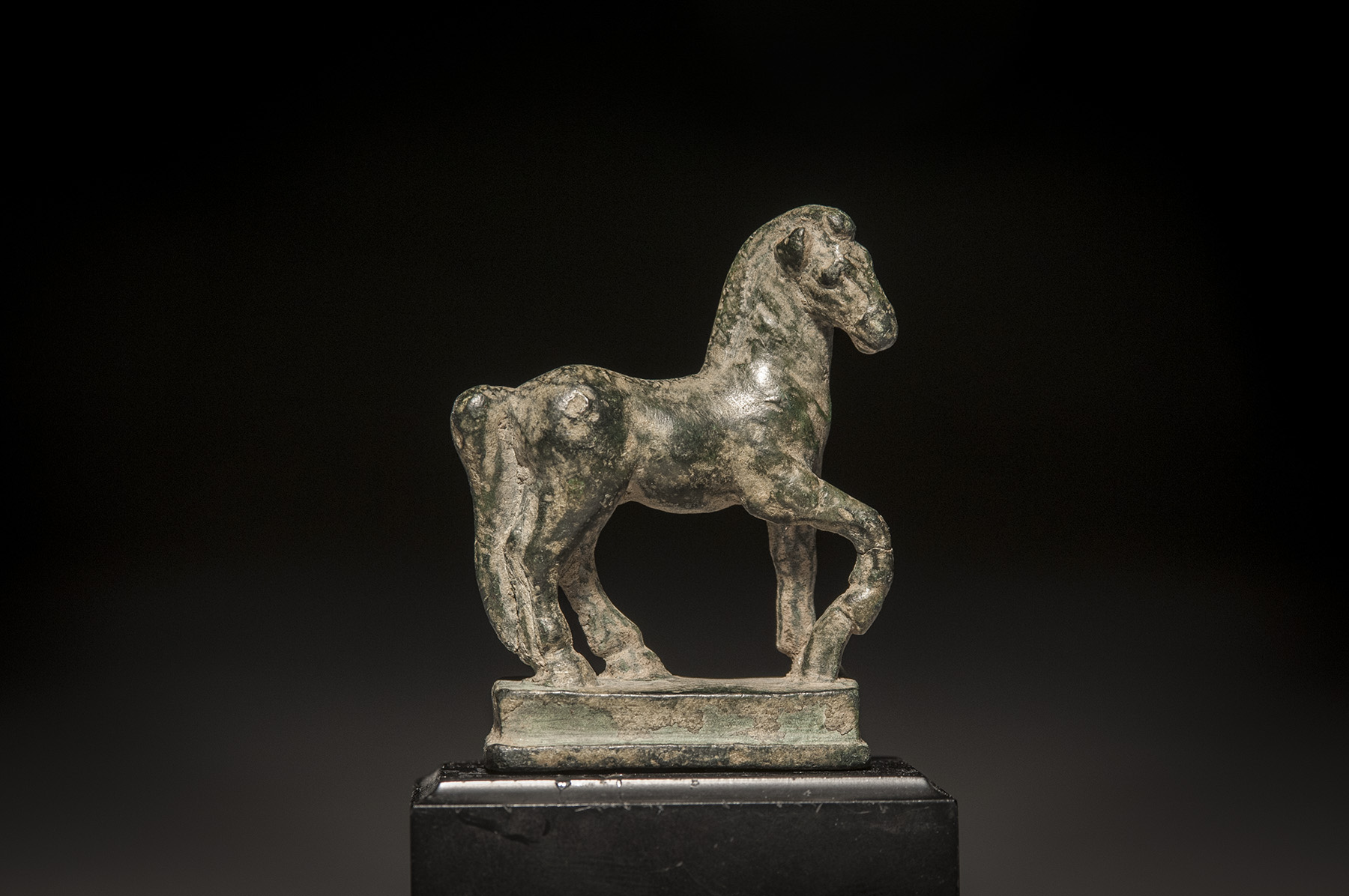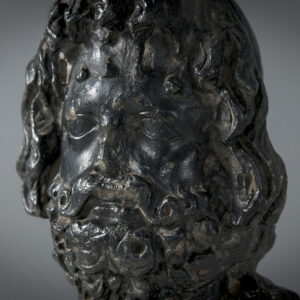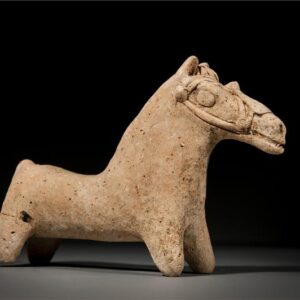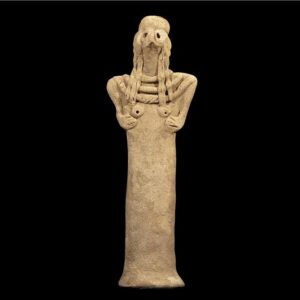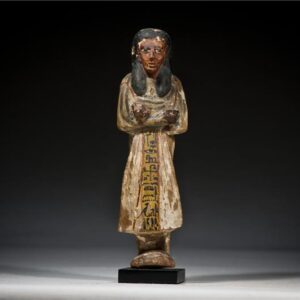This elegant pedestal sculpture of a horse with right foreleg upraised is a remarkable survival from the high point of the early Roman Empire. It is unusual in displaying a combination of progressive and archaic traits. The horse is anatomically accurate yet there has been a deliberate eschewing of muscular and other detail, it is more like archaic sculptures which defined pre-Roman cultures across Europe, notably the Etruscans and the Iberians. These styles were fundamental in inspiring works by painters and sculptors including Picasso and Marini, who were among the first to recognize the validity of deconstructing detail and emphasizing the power and dynamism of pure form. To judge from the size of the piece, it would have served a personalized and votive purpose for display or even sacrifice/dedication as an offering.
The specific role of horses throughout the Roman Empire varied from period to period, but they were always associated with the social elite or ‘knightly’ class. Specific deities associated with horses include Neptune, the Roman god of the sea who was transformed from the Greek god Poseidon. In one of his roles he becomes Neptune Equester, the patron deity of horses and horseracing. Other horse-linked deities include the Gallo-Roman goddess Epona, who bears the distinction of being the only indigenous European gods to enter the Roman pantheon (though this did not occur until the 3rd century C.E., sometime after the current piece was made).
This piece is too small for public display so is, as stated, likely to be a personal piece carried as an amulet or sacrificed (i.e. buried or thrown into a river, lake or spring) as a gesture of obeisance or prayer. It has acquired an even, smooth age patina, and would be a beautiful addition to any good collection of ancient Mediterranean art



